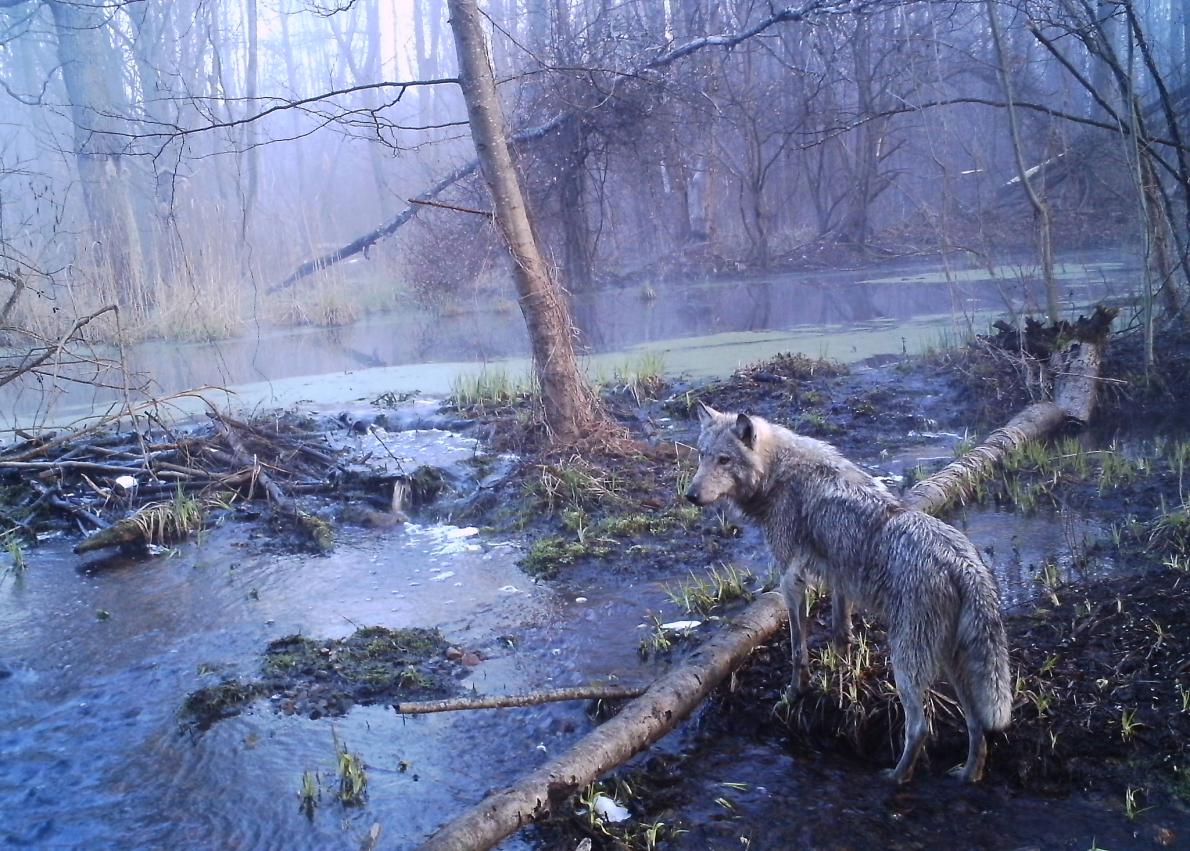Chernobyl and Other Places Where Animals Thrive Without People

KIEV, Ukraine—War, nuclear accidents, and poverty rarely have a silver lining, but in Chernobyl and a handful of other places around the world, catastrophes for human populations have become a boon for wildlife. In places plagued by guerrilla warfare, nuclear fallout, and chemical weapons, wild animals have rebounded in great numbers on land we have made too polluted—or too dangerous—for human habitation.
Animal and plant life are coming back strong in the Chernobyl nuclear disaster zone, which has been undisturbed by humans for nearly 30 years said Jim Smith, an environmental scientist and author of a new study of life near Chernobyl released on Monday. “It’s much like the landscape of the rest of that area of Ukraine and Belarus, but without the people,” he said. “Ten years ago, it was like a town overgrown by the forest. Today it’s like a forest that has swallowed some buildings.”
Chernobyl Nuclear Exclusion Zone, Ukraine: Nuclear Disaster
Wolves, elk boar, bear, lynxes, deer, and dozens of other species are thriving inside the area evacuated after the Chernobyl disaster, Smith’s new study reports. The nuclear accident in Ukraine in 1986 was one of the worst in history, forcing the evacuation of 116,000 people from 1,600 square miles of land, but today wildlife populations are soaring in an area that bridges the border between Ukraine and Belarus.
“Nature flourishes when humans are removed from the equation, even after the world’s worst nuclear accident,” said Smith, an earth and environmental sciences professor at the University of Portsmouth in the U.K. The “accidental” nature reserve created in this almost completely unpopulated “exclusion zone” is now teeming with big herbivores and predators, including the rare European lynx and the European brown bear, not been seen in the region for nearly a century.
Przewalski’s horse and the endangered European bison, introduced to the area, have also prospered. Wolves abound, at population levels seven times higher than in comparable reserves uncontaminated by nuclear fallout. “We’re not saying the radiation levels are good for the animals; we know it damages their DNA, but human habitation and development of the land are worse for wildlife,” he said.
Korean Demilitarized Zone: Military Lines
The most heavily armed border in the world is called the demilitarized zone and runs 155 miles between North and South Korea. The 2.5-mile strip of land is dotted with landmines and is hemmed in by bunkers, trenches, walls, gates, barbed wire, and hundreds of thousands of soldiers—and is home to a surprising array of endangered species.
The involuntary park, which covers an area a little bigger than New York City ranges from swamps, mountains and prairies to tidal marshes, lakes and coastline, is now home to the rare red-crowned crane and the white-naped crane as well as the Asiatic black bear. The narrow buffer zone may also harbor the extremely rare Amur leopard and the Siberian tiger. Ongoing tensions between North and South Korea mean the thin strip of land will probably remain a safe haven for wildlife for some time.
Darién Gap, Colombia and Panama: Guerilla Territory
Spanning tens of thousands of miles, the Pan-American Highway connects Prudhoe Bay, Alaska, to Ushuaia on the southern tip of Argentina—except that it doesn’t. For about 50 miles on the border between Panama and Colombia, the road disappears into a stretch of some of the most inhospitable rainforests, swamps, and mountains in the world.
The lack of a road means weak central authority, making this a haven for guerillas fighting the Colombian government, as well as for drug traffickers and migrants in the 2,220 square miles of Panama’s Darién National Park, a UNESCO World Heritage site. The park shelters endangered and threatened species such as the brown-headed spider monkey, great green macaw, jaguar, and harpy eagle. “It helps that the road has not been completed,” said Dr. Ricardo Correa, conservation programs advisor at Panama Wildlife Conservation. “The guerillas and the poverty are impediments to development, but this helps protect the biodiversity of the region,” he said.
![]()
![]()
Rocky Mountain Arsenal National Wildlife Refuge, Colorado: Toxic Past
Black-footed ferrets, American bison, and more than 330 other species wander through the short-grass prairie landscape of this reserve, against a backdrop of high rises in downtown Denver. Covering 25 square miles, this former World War II chemical weapons production facility is today home to prairie dogs, bald eagles, coyotes, deer, and a range of birds and plant species.
“When they fenced in this place during the war, they also fenced in the deer herds and the coyotes, and their descendants have been here since this place was established,” says Edward Tagliente, a park ranger who has worked for more than a decade at the reserve. Even with all the chemicals, heavy metals and pesticides, the animals remained, he said. “The biggest cause of the depletion of wildlife populations is habitat loss, whether we’re farming, mining, building cities, or even making chemical weapons,” said Tagliente. “Whatever activity we’re doing, we’re disrupting that habitat.”
Source
John Wendle. National Geographic. http://news.nationalgeographic.com/2015/10/151008-chernobyl-animals-thrive-without-people-science/

